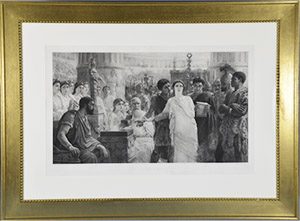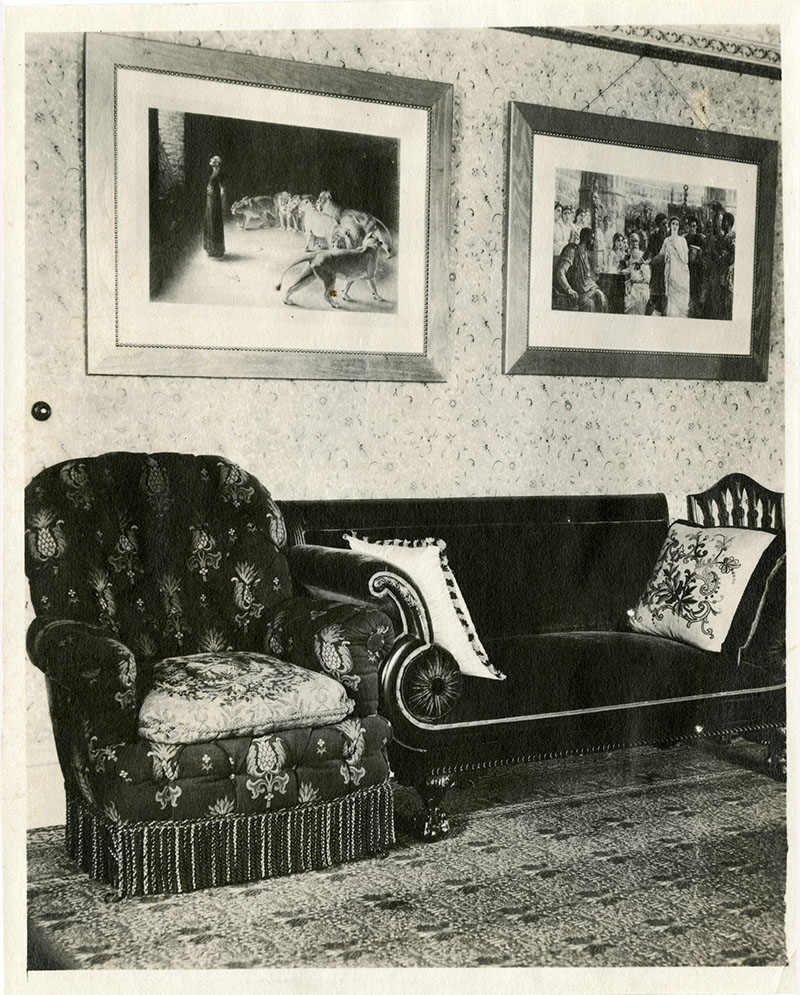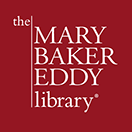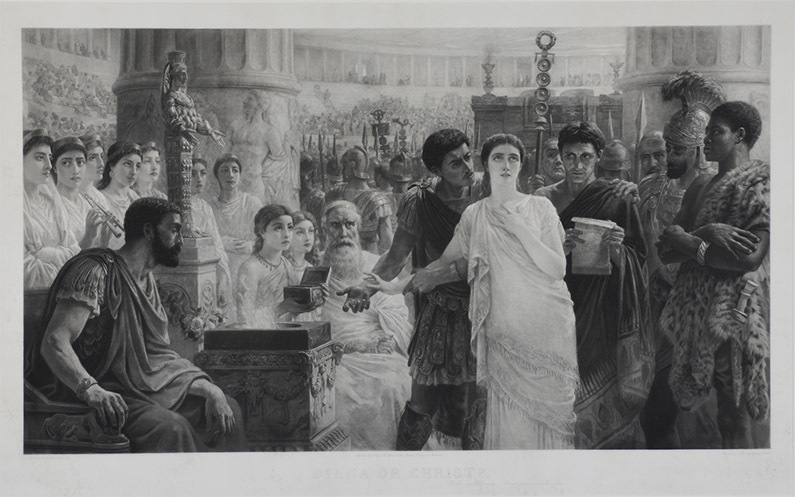Detail of 0.1254
In 1896 the Christian Science Board of Directors gave Mary Baker Eddy an engraving of “Diana or Christ?” as “a token” of their love.1 This piece from our collection was the work of the British biblical painter Edwin Longsden Long (1829–1891).2
The son of a painter with the same name, Long was born in Bath, England. He traveled to London to study at the British Museum and was later a pupil of the art educator, painter, and critic James Matthew Leigh. Long began his career as a portrait painter, but later gravitated toward scenes inspired by “the Orient,”3 including “history paintings.” These works often portrayed a particular moment in time—usually the critical junctures in a story— chosen to teach an ethical lesson. Popular from the sixteenth century onward, they treated historical, allegorical, biblical, and mythological themes.4

View of 0.1254 in its original frame from Mary Baker Eddy’s home.
“Diana or Christ?” depicts an early Christian woman facing a difficult choice. Will she deny her faith and offer incense on the altar of the goddess Diana (the protector of the ancient city of Ephesus, whose effigy gazes down at her) and go free? Or will she choose to follow Christ and face martyrdom (with the arena of the theater of Ephesus, and the lions, a mere few feet away)?
The caption explains: “Let her cast the incense,—but one grain and she is free.” The woman’s gaze is turned heavenward and her hand rests on her heart, as if she sees something beyond our frame of reference. This is a possible allusion to Stephen, who saw “the glory of God” before he was stoned to death.5 We assume that she will choose Christ; the scene captures the moment when she turns away from the pagan altar. At the same time, external pressures—like the restraining arm of her lover—are quite apparent. Dozens of armor-clad soldiers stand behind her, and the Vestal Virgins, witnesses of the torture of Christians in the Empire’s amphitheaters, stand to the left, their arms crossed.
Thanking the Directors for their gift, Eddy identified the relevance of the painting’s lesson in her response to them:
Your fine engraving so illustrating the struggle that quotation of yours points to arrived to-day. It is grand and grave, a fit companion of “Daniel’s Answer” [by Briton Rivière (1840-1920)]. “Diana or Christ” is very suggestive of each day’s experience in the true progress of a Christian Scientist. I value your gift beyond pen to express….6

The library at Pleasant View, c.1900, P06311
Both “Daniel’s Answer” and “Diana or Christ?” seem to echo words Eddy penned in Science and Health with Key to the Scriptures:
If you launch your bark upon the ever-agitated but healthful waters of truth, you will encounter storms. Your good will be evil spoken of. This is the cross. Take it up and bear it, for through it you win and wear the crown. Pilgrim on earth, thy home is heaven; stranger, thou art the guest of God.7
- The Christian Science Board of Directors to Mary Baker Eddy, 26 June 1896, 002a.02.010.
- Published July 1st 1889 by Thomas Agnew & Sons London, Liverpool and Manchester; printed in Paris by Goupil & Co.
- Stephen, Sidney Lee, Robert Blake, and C. S. Nicholls. The Dictionary of National Biography. Volume 12 (London: Oxford University Press, 1909), 102.
- “History Painting,” The National Gallery of Art, accessed May 31, 2016, https://www.nationalgallery.org.uk/paintings/glossary/history-painting
- See Acts 7:54-60.
- Eddy to Board of Directors, 22 June, 1896, L02787. See this link to a previous From the Collections article on “Daniel’s Answer to the King.”
- Eddy, Science and Health with Key to the Scriptures, 254.


